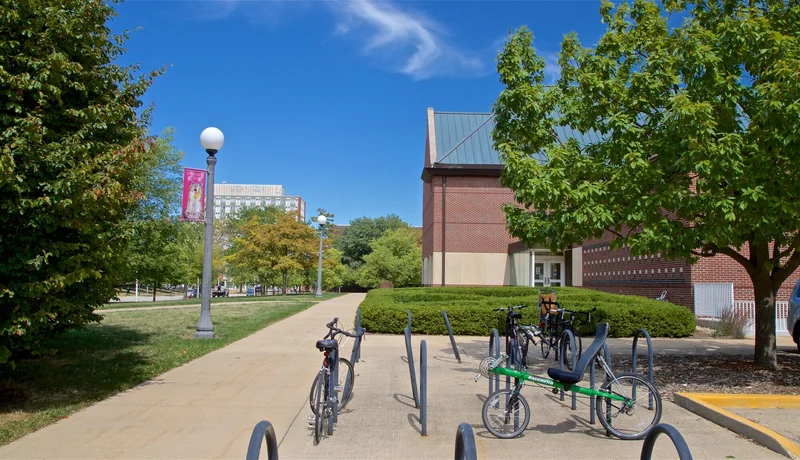An analysis of any event begins with a simple question: what are we looking at? Typically, the inputs are straightforward—a product launch, a financial report, a political outcome. The dataset provided for Champaign, Illinois, however, presents a unique analytical challenge. It’s not a single event, but a fractured mosaic of three distinct, uncorrelated data points, bound together only by a common geographic tag.
We have, in order:
1. An undated promotional announcement for a Christian music concert, CAIN Jesus Music Tour Champaign, Illinois, featuring the band CAIN.
2. A series of photo captions from a future college football game between the Illinois Fighting Illini and the Ohio State Buckeyes, scheduled for October 11, 2025.
3. A boilerplate legal text—a full Cookie Notice from NBCUniversal.
To treat this as a coherent "event" is a categorical error. Instead, the only logical approach is to analyze the dataset itself. The story here isn't the concert or the game; the story is the profound system failure that presented these three items as a single narrative. What we have is a ghost in the machine, a digital artifact of a broken algorithm.
Let's dissect the components with the precision they lack in their aggregation. The first component is pure marketing copy for a CAIN concert. It’s emotionally charged, using phrases like “singing your heart out” and “celebrating faith,” but it’s operationally useless. It contains no date, no venue, no time. It exists as a floating, context-free advertisement, a digital flyer dropped into the void. For anyone trying to plan a trip, perhaps looking for Champaign, Illinois hotels or checking the local weather in Champaign, Illinois, this information is functionally noise.

The second component is the most data-rich. We have a specific event: an NCAA football game. We have a specific date—or, to be more exact, a future date of October 11, 2025. We have two teams, a location (Memorial Stadium in Champaign), and even specific individuals named, like Coach Bret Bielema and Ohio State receiver Jeremiah Smith. The photo captions provide a timestamped reality, a concrete anchor in a sea of ambiguity. The sun shining through the colonnades, the band performing, the Illinettes dance team—these are verifiable moments that will, presumably, occur. This is the signal.
Then we have the third component, the NBCUniversal Cookie Notice. This is the outlier, the wrench in the gears. It’s a dense, multi-paragraph legal document explaining HTTP cookies, analytics providers, and opt-out mechanisms. I’ve looked at hundreds of corporate filings and website footers, and seeing a full cookie policy presented as event content is a spectacular failure of data categorization. It has no narrative connection to a football game or a concert, other than the fact that it was likely scraped from the bottom of the NBC Chicago article that mentioned the game. It is, for all intents and purposes, junk data.
What algorithm, what system, could possibly ingest these three inputs and conclude they describe a single, unified event? The logic is baffling. It’s like feeding a machine a recipe for a cake, the schematics for a car engine, and a page from a dictionary, and expecting it to produce a sonnet.
The only variable that connects these disparate pieces is the location: Champaign, Illinois. This dataset is a fossil record of digital activity related to a specific place, compressed into a single, meaningless layer. An algorithm, tasked with creating content about "what's happening in Champaign," has clearly scraped multiple sources, identified the keyword, and mashed the results together without any semantic understanding.
This is a perfect illustration of the signal-to-noise problem in our modern information ecosystem. The "signal" is the core fact—a football game is happening on a certain date. The "noise" is the undated concert ad and the irrelevant legal text. The system that compiled this failed to distinguish between the two. Why? Most likely, its primary objective was not to inform, but to simply populate a page with keywords to attract search traffic from queries like "where is Champaign, Illinois" or "Portillo's Champaign, Illinois." The user's actual need for coherent information is a secondary, if not tertiary, concern.
This raises a more troubling question: how much of the localized information we consume is generated this way? When we search for events in our towns, are we getting a curated reality or just a jumbled output from a content-agnostic bot? The system has no concept of time (mixing a future event with an undated one), no concept of category (mixing entertainment with legal disclaimers), and no concept of relevance. It’s a ghost built from fragmented data, haunting a specific set of GPS coordinates. It can tell you that things are happening in Champaign (a place with a Costco and an Olive Garden, apparently), but it cannot provide a coherent narrative about any single one of them.
My analysis concludes that there is no "event" to analyze here. The event is the dataset. It is a case study in data corruption, a snapshot of algorithmic incompetence. The story isn't about faith-based music or college football; it's about the decay of information integrity. We are looking at the digital equivalent of a misprinted newspaper, where an obituary is accidentally inserted into the middle of the sports page. The error is more interesting than the content it disrupts. The most valuable insight from this collection of data is that our automated systems for curating reality are still profoundly, and often absurdly, flawed. The signal here isn't what happened in Champaign, Illinois. The signal is the noise itself.